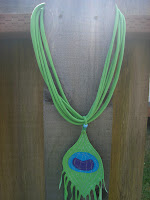My youngest has developed an inexplicable love for all things French over the past few years. She owns two vintage berets (one still has the Made in France tag inside of it, much to her delight), Eiffel Tower earrings, a pocket French/English dictionary, and an antique key to a door somewhere in France. And while my husband and I have a general, probably average appreciation for France, we cannot pinpoint where or how her affair began.
Last weekend, while out garage-saling I found a black and white, slightly boat necked shirt in my youngest's size. I called her over and remarked it looked very French to me. It even had the two button detail on the shoulder. With the exception of a couple of stains (chocolate ice cream, I'd guess) it was in good shape. As proof that our brainwashing careful training around consumerism is working, she immediately said, "You could sew something over that, and I could wear it, right?"

We brought it home and decided an Eiffel Tower and a little moon (to cover a conspicuous stain towards the middle of the shirt) would be a cute design and chose some scraps from my jersey fabric bin to use. I also grabbed a sheet of lightweight fusible webbing. It seems a lot of people sewing children's clothes have had some experience working with quilts first. Although I have owned a sewing machine throughout all of my adult life, prior to children, it only came out to hem skirts, repair holes, and occasionally sew curtains or pillows. When I began modifying/repurposing/upcycling secondhand clothes, I was very inexperienced. My first appliques were always simply pinned to the fabric. Ninety-nine percent of the time I was working on t-shirts with scraps from other t-shirts and despite the pins, the fabric would simultaneously stretch and wrinkle in the most frustrating ways. Finally, while participating in an upcycling workshop, a quilter tipped me off to fusible webbing. Unfortunately, it was a heavier weight, and I was always dismayed by the stiffness it created in the shirts. My kids would also complain that it made the clothing less comfortable. Eventually, while shopping for elastic in our local fabric store I stumbled on the fusible webbing section and discovered it came in different weights. I had no idea! So this post is for the other sewers like me, who just might not know what is out there.

Start by cutting a piece of fabric that is large enough to accommodate your design. Then cut a piece of webbing slightly smaller than your fabric. I always like to iron out my fabric first and then lay on the webbing. It keeps everything smoother and crisper when you make the design. You will lay the webbing filmy side down/paper side up on top of your fabric. The filmy stuff gets very sticky when exposed to heat, so you don't want any peeking out from under the paper or overhanging onto your ironing board. I have done both and it is a pain to clean off of both items. Run the iron over the paper for about thirty seconds. Do not peel off the paper yet! You want to use it while drawing your design.

Sketch your design on the paper, keeping in mind it will be reversed when you cut it out and flip it over and apply it to the fabric. Also remember, you will be sewing along the edges of the design and may not want a lot of detailed edges (e.g. a sun with many pointed bursts around the circle). I used to draw on the fabric side, which left very little wiggle room for mistakes. At one point, I even drew on the fabric and cut it out before ironing on the webbing. Very messy when it came to ironing. Once you are happy with the design you can cut it out and peel off the paper. You will see a very thin sheen of webbing has been applied to the fabric.

Now it is time to iron the design onto the shirt. I always give the article of clothing a once over with the iron to take out any wrinkles, plus the applique is easier to place on warm fabric. Lay the design shiny side down where you would like it. Don't forget if you are covering stains or a logo to double check this is effective. Even with the webbing, jersey knit has a lot of stretch to it, and I have been able to manipulate it more than I would have guessed. Run the iron over the design, making an effort to press down all of the edges. Although, this feels a little permanent, once it cools it will begin to lift on its own from the fabric. This means a) you need to be ready to sew the design on fairly quickly after ironing or b) you can always reset the design if you don't like the original placement.

Sew around all of the edges and Voila! your applique is done. I cannot tell you how much this seemed like magic to me the first time I did it. The pins, the pulling (think superhero shirts with insignias inside of circles), the tearing out of stitches, the inevitable little creased wrinkle left in because I did not want to do it again... Now my kids can have one-of-a-kind shirts within an easy afternoon.





























